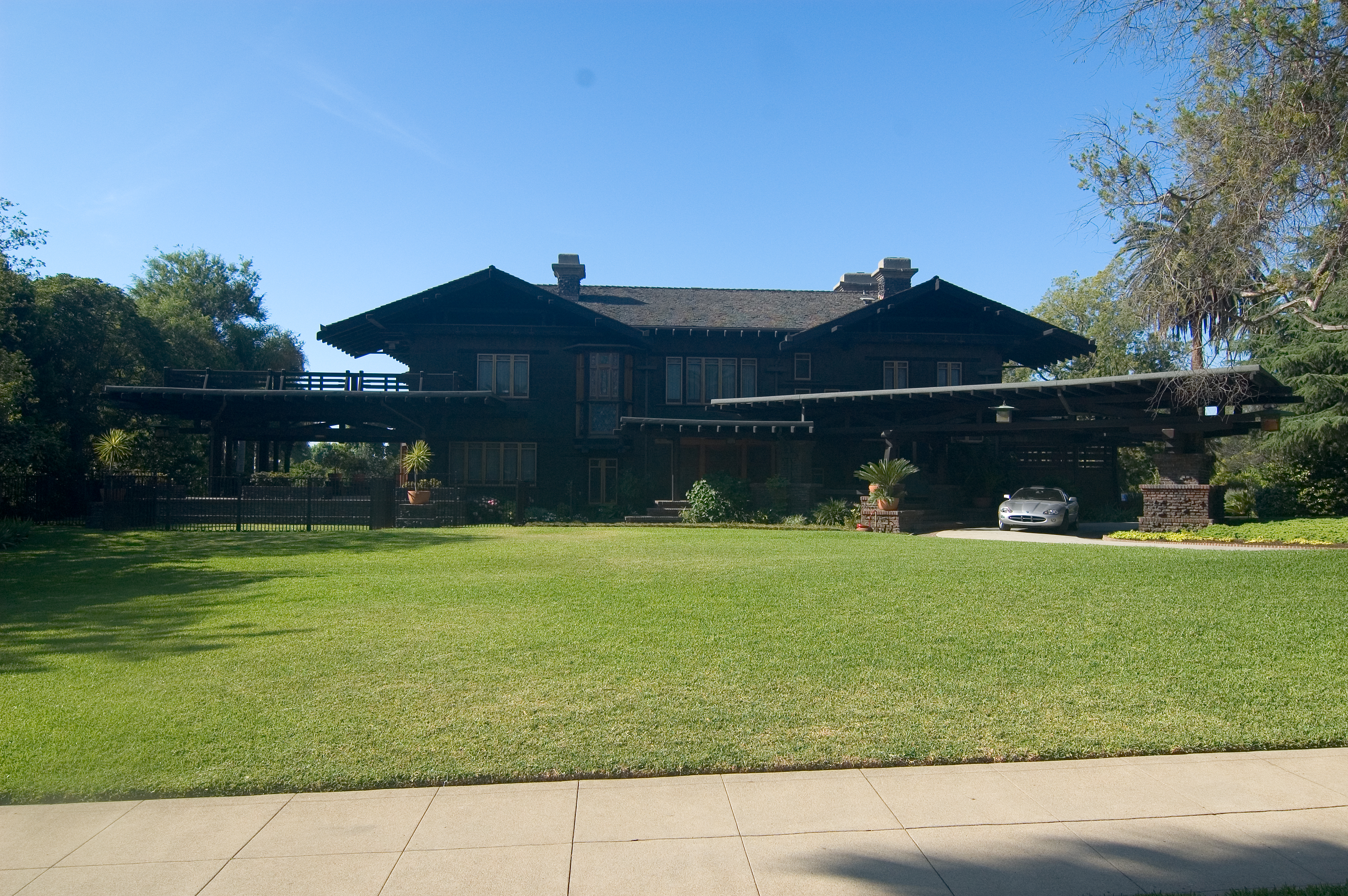- Robert R. Blacker House
Infobox nrhp
name = Robert R. Blacker House
nrhp_type =

caption = Robert R. Blacker House (Greene & Greene 1907)
location = 1177 Hillcrest AvePasadena, California
nearest_city =
lat_degrees =
lat_minutes =
lat_seconds =
lat_direction =
long_degrees =
long_minutes =
long_seconds =
long_direction =
area =
built =
architect = Charles & Henry Greene
architecture = Bungalow/Craftsman
added =February 6 ,1986
visitation_num =
visitation_year =
refnum = 86000147
mpsub =
governing_body = The Robert Rowe Blacker House, often referred to as the Blacker House or Robert R. Blacker House, was built in 1907 by Robert Roe and Nellie Canfield Blacker. Designed by Henry and Charles Greene, of the renowned Pasadena firm ofGreene & Greene . This house was a lavish project for the Greene brothers, costing in excess of US$100,000.00, (US$2.2 million in 2006 dollars). [ [http://www.measuringworth.com/ppowerus/ The Purchasing Power of Money in the United States 1774 to 2006] ] Everything for the house was custom designed, right down to theteak eschuceon plates of the upstairs mahogany panel doors to the linen closets with theirebony cloud adorned keys.Robert Blacker died before his wife. Upon Nellie's death, the property went into probate as the Blacker's did not identify any heirs. In her Last Will and Testament, Nellie specified the house and all of its belongings to be sold as a whole; the house, land, and its furnishing were not be to parceled off. Unfortunately, the representative of Nellie Blacker's estate decided to maximize the value of the assets in contravention to her expressed wishes and marketed the property as something that could be bought and then parceled off by the purchaser, subsequent to the sale. The seven acre (2.8 hectare) estate was divided into smaller parcels, destroying the gardens in the process. The main residence was sold, placed on a small one acre (0.4 hectare) parcel. The garage became a separate residence, as did the caretaker's cottage. The remainder of the gardens were subdivided into separate lots. More notable, though, was the famous "yard sale" conducted shortly after the sale in
probate where the furnishing were sold off, in a yard sale fashion. Furniture built for the Blacker House now finds itself inmuseum s and the hands of wealthy collectors andHollywood luminaries. One family, the Andersons, lived down the street and were able to buy a large lot of furniture. In 1990, an Anderson family member offered the then-owners of the Blacker House the ability to purchase the breakfast room table for the remarkable sum of $390,000.00; the table was later sold at auction for approximately $70,000. This adroitly establishes the value Greene & Greene artifacts can achieve in the auction marketplace. On 19 June 2007, the following Greene & Greene items; living room chair, bedroom chair, and bedroom andirons were sold atSotheby's fetching prices, including Buyer's premium and New York sales tax, of $913,600, $396,000, and $66,000 respectively. [Williams, Janette. [http://www.pasadenastarnews.com/news/ci_6182486 "Some items returning to Blacker"] , Pasadena Star News, June 20, 2007]The house is currently privately owned and is located at 1177 Hillcrest Avenue in Pasadena; it commands an institutional-like presence in Pasadena's Hillcrest neighborhood.
The movie "
Back to the Future " was shot inside the Blacker House; the exterior shots were of the Blacker House's "smaller brother", theGamble House .The house was purchased by Mr. and Mrs. Max Hill in the 1950s. In 1985, recently widowed, Mrs. Hill sold the property to Barton English, a Princeton graduate and rancher from Texas. Shortly after close of escrow, Mr. English removed more than seventy custom lighting fixtures from the house. This incident has been referred to as the "Rape of the Blacker House". National media attention to this sad sequence of events was facilitaated through the efforts of Pasadena Heritage executive director Claire Bogaard. Articles appeared in the "
Los Angeles Times ", "Washington Post " and "New York Times ". Pasadena enacted an emergency ordinance, known as the Blacker Ordinance, which attempted to limit the ability of people owning homes designed by Greene & Greene to dismantle or otherwise destroy artifacts therein. Although not a direct prohibition, the ordinance delayed for up to one year any changes or alterations, subject to review of a committee of the Planning Commission.Notes
References
Williams, Janette. [http://www.pasadenastarnews.com/news/ci_6182486 "Some items returning to Blacker"] , Pasadena Star News, June 20, 2007
Makinson, Randell L., Heinz, Thomas A., Pitt, Brad; Greene & Greene: The Blacker House; 2000; Gibbs Smith Publisher, Salt Lake City, Utah,132 pages. ISBN: 0-87905-949-4
Wikimedia Foundation. 2010.
